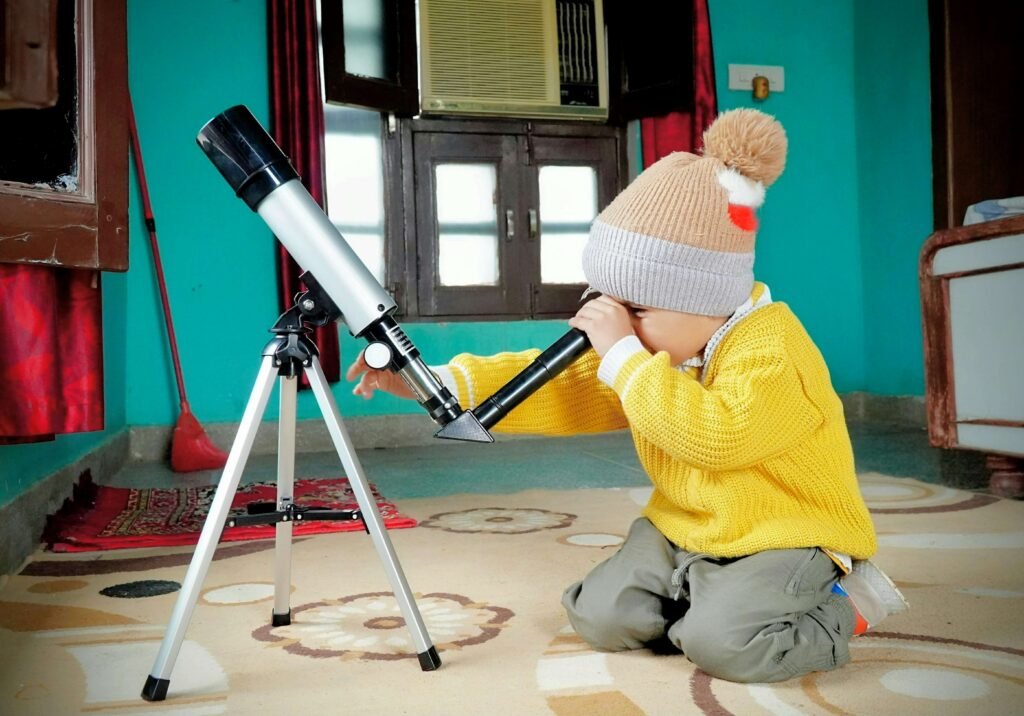09.06.2025
The Benefits of Thematic Space Learning Units
Learning Tools

A Universe of Knowledge—Organized
When kids learn about space, it’s more than just stars and planets—it’s an entire universe of questions, concepts, and curiosity. That’s where thematic learning units come in. Rather than scattering facts across isolated lessons, thematic units organize content into coherent, connected explorations. A unit focused on the solar system, for example, brings together planet facts, orbital science, mythological stories, creative activities, and vocabulary—all under one exciting theme. This structure creates a much richer learning experience.
Deeper Engagement, Better Retention
Children thrive on patterns, and thematic units take advantage of that. When lessons are built around a shared theme, each part reinforces the others. A craft project about Saturn’s rings becomes more meaningful when paired with a reading passage about gas giants, a flashcard activity on planetary order, and a game that compares planet sizes. This immersive style helps kids make connections between ideas, which boosts both understanding and long-term memory.
Flexibility for Different Ages and Learning Styles
One of the strengths of thematic space units is how well they adapt to various learners. Younger kids might focus on coloring and storytelling. Older kids can dive into orbit simulations or write short reports about moons. Visual learners benefit from diagrams and flashcards. Hands-on learners enjoy making rockets or models. A single unit can include enough variety to challenge and excite everyone—without requiring different resources for every student.
Encouraging Exploration, Not Just Memorization
Traditional space lessons can easily become lists of facts: “Mars has two moons,” “Venus is hot,” and so on. Thematic units encourage kids to go further. When learning is structured around a theme like “Life in Space” or “The Moon,” children naturally begin to ask deeper questions: “Could we live there?” “What do astronauts eat?” “What happens during an eclipse?” This approach fosters a love for inquiry and a mindset of discovery.
Support for Parents and Educators
For homeschooling families and teachers alike, thematic units reduce planning stress. Instead of pulling random worksheets or activities from different sources, a good unit comes as a cohesive bundle: study guides, flashcards, activities, quizzes, crafts, and sometimes even schedules. Everything fits together logically. This saves time, ensures better flow, and makes learning more efficient for both the adult and the child.
Tying Science to Creativity
Space-themed units also leave room for imagination. Kids might write a short story about being lost on an alien planet, design their own constellation, or build a telescope from cardboard tubes. These creative tasks bring balance to the scientific material, allowing learners to process ideas in their own ways. It’s not about rote memorization—it’s about interaction, emotion, and storytelling.
A Pathway into Big Ideas
Themes like space naturally open doors to important topics: the environment, technology, exploration, and cooperation. By using themed learning units, adults can introduce complex ideas in age-appropriate ways. Kids not only learn what the planets are, but also why studying them matters. And that kind of context is what turns a lesson into a lasting impression.

Share

09.06.2025
Using Space to Spark Big Questions in Kids
Why Space Inspires More Than Just Facts When kids start learning about space, it’s not just the planets or stars...

09.06.2025
A Parent’s Guide to Making Space Education Easy
Space Is Big—But Teaching It Doesn’t Have to Be The universe might seem overwhelming, but introducing your child to space...

09.06.2025
Why Kids Love Planet Flashcards
Space in Their Hands There’s something magical about holding a whole planet in the palm of your hand. Flashcards may...

09.06.2025
Helping Kids Learn Science Without Screens
Rediscovering Hands-On Learning In an age where education often relies on tablets and video lessons, many parents and educators are...

09.06.2025
How Space Crafts Make Learning Fun for Kids
Turning Curiosity into Creativity Children are naturally curious about the world around them—and few things spark that curiosity quite like...


